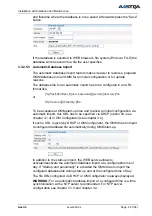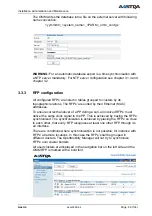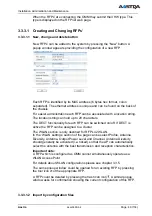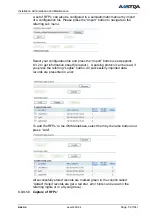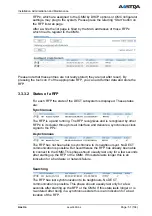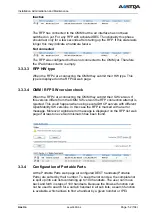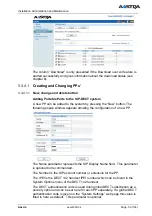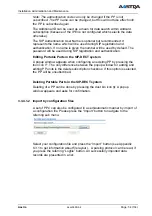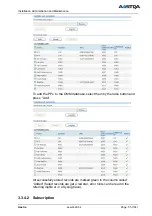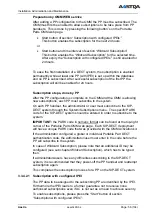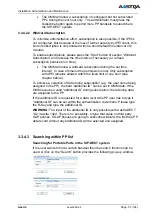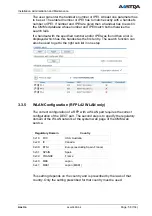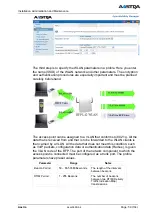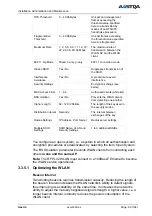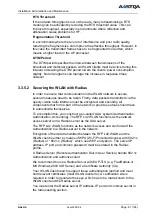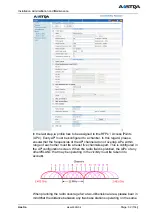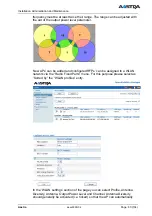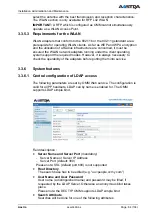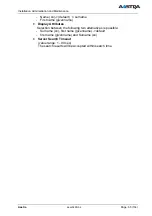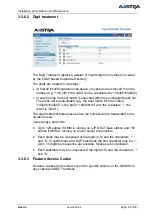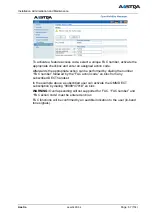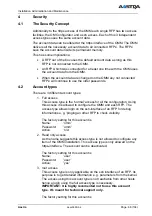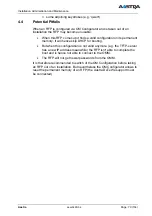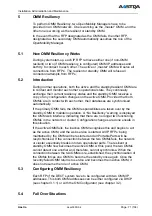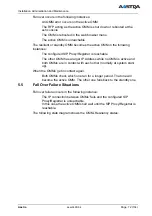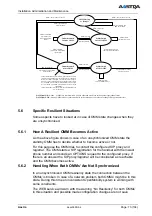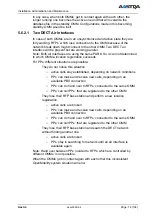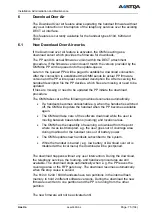
Installation, Administration and Maintenance
Aastra
depl-0900/0.4
Page: 60 (104)
RTS Threshold
0 – 4.096 Bytes
Unicast and management
frames exceeding the
threshold value specified
here are transmitted by
means of an RTS/CTS
handshake procedure.
Fragmentation
Threshold
0 – 4.096 Bytes
Unicast frames exceeding
the threshold value specified
here are fragmented.
Maximum Rate
1; 2; 5,5; 6; 9; 11; 12; 18;
22; 24; 36; 48; 54 Mbps
The maximum rate of
transmission between the
WLAN AP and the WLAN
client.
802.11 b/g Mode
Mixed, b-only, g-only
802.11 connection mode.
Hidden SSID
Yes / No
Suppresses transmission of
the SSID.
Interference
Avoidance
Yes / No
A procedure to avoid
interference.
Security Settings
Encryption settings (see
below)
MAC Access Filter
1 – 64
Authorized clients (white list)
BSS Isolation
Yes / No
Prevents the WLAN clients
from detecting one another.
Cipher Length
64 / 128 / 256 Bits
The length of the key used in
the security modes.
Distribution Interval Seconds
The interval between
exchanges of the key.
Radius Settings
IP Address, Port, Secret
Radius server settings.
Multiple SSID
Settings
SSID Name, VLAN and
Security Settings
1 to 3 additional SSIDs
You configure an open system, i.e. a system in which all authentication and
encryption procedures are deactivated, by selecting the item ‘Open System’.
The ‘BSS Isolation’ parameter prevents WLAN clients from contacting each
other
via one and the same AP
.
Note:
The RFP L42 WLAN must connect to a 100BaseT Ethernet to become
the WLAN service operational.
3.3.5.1 Optimizing the WLAN
Beacon Interval
Transmitting beacons requires transmission capacity. Reducing the length of
the beacon interval increases the WLAN network's ability to detect signals,
thus improving its availability. At the same time, it increases the network's
ability to adjust the mutually negotiated signal strength. A higher value, i.e. a
longer beacon interval, indirectly reduces the power consumption of the
WLAN client.

